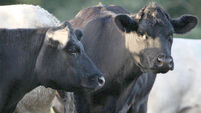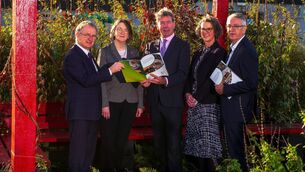Last straw for pig farmers?
In both cases, production by farmers of the raw material is threatened to the point where the critical mass required to sustain slaughter plants, feed manufacturing, and service providers may eventually not be achieved.
Talks next Tuesday between Agriculture Minister Brendan Smith and the farm organisations were expected to result in aid for sheep farmers, with Mr Smith envisaging help for the sector from up to €24 million per year of newly free-up EU funding.
The IFA estimated that sheep farmers needed at least twice that amount. But the agenda has completely changed now, with the stricken pig industry the new priority.
It could be weeks or even months before the effects of the pork contamination crisis on pig farmers can be fully evaluated. But their ability to withstand this latest crisis — part of a series of setbacks in recent years —must be a big worry.
Even at the best of times, the industry follows a boom and bust cycle, with profitability only recovering when enough producers are squeezed out of business. Teagasc experts who advise pig farmers sounded the alarm last year and said the sector needed a survival strategy — instead it has got a food safety crisis.
Pig feed is dearer in Ireland than in other countries, accounting for about 70% of the cost of producing a pig.
Now it has emerged farmers have been paying dearly for seriously contaminated pig feed.
Pig farmers everywhere were hit in 2007 by soaring feed prices, leaving them nursing significant losses on every pig.
Squeezing them even harder in Ireland was the slowness of EU authorisation of new genetically modified crops being adopted in countries exporting grain to Ireland.
Irish producers have needed ultra-efficient use of feed to survive financially.
But improvements in efficiency can only go so far, and ground to a halt in the last decade, according to Teagasc experts, with litter size and pig growth rates, for example, falling substantially behind other countries.
This is attributed at least partly to the loss of staff to other more remunerative sectors outside of farming, and increased reliance on untrained non-national workers. Along the way, the Nitrates Action Plan imposed in 2006 has threatened farmers with huge extra costs.
Now, the pork crisis is sure to be the last straw for many of them. Ireland’s pig industry could easily go the way of Britain’s — nearly halved by the effects of environmental regulations, lack of technical backup and poor profitability, leaving Britain now less than 50% self-sufficient in pigmeat.
Even before the latest setback, farmers here were reluctant to invest in an industry that seemed to have an uncertain future.
Many of them entered the business in the 1970s, and are now in the older age category and will be more cautious and more likely to exit the industry in response to setbacks.
And if the level of production falls far enough, Ireland’s total pig sector employment of about 7,500 comes under threat.
The Government faces a near-impossible task to bring processors and the retail sector at home and abroad through this crisis, but it must realise that we will have no pig industry left if farmers cannot survive.












